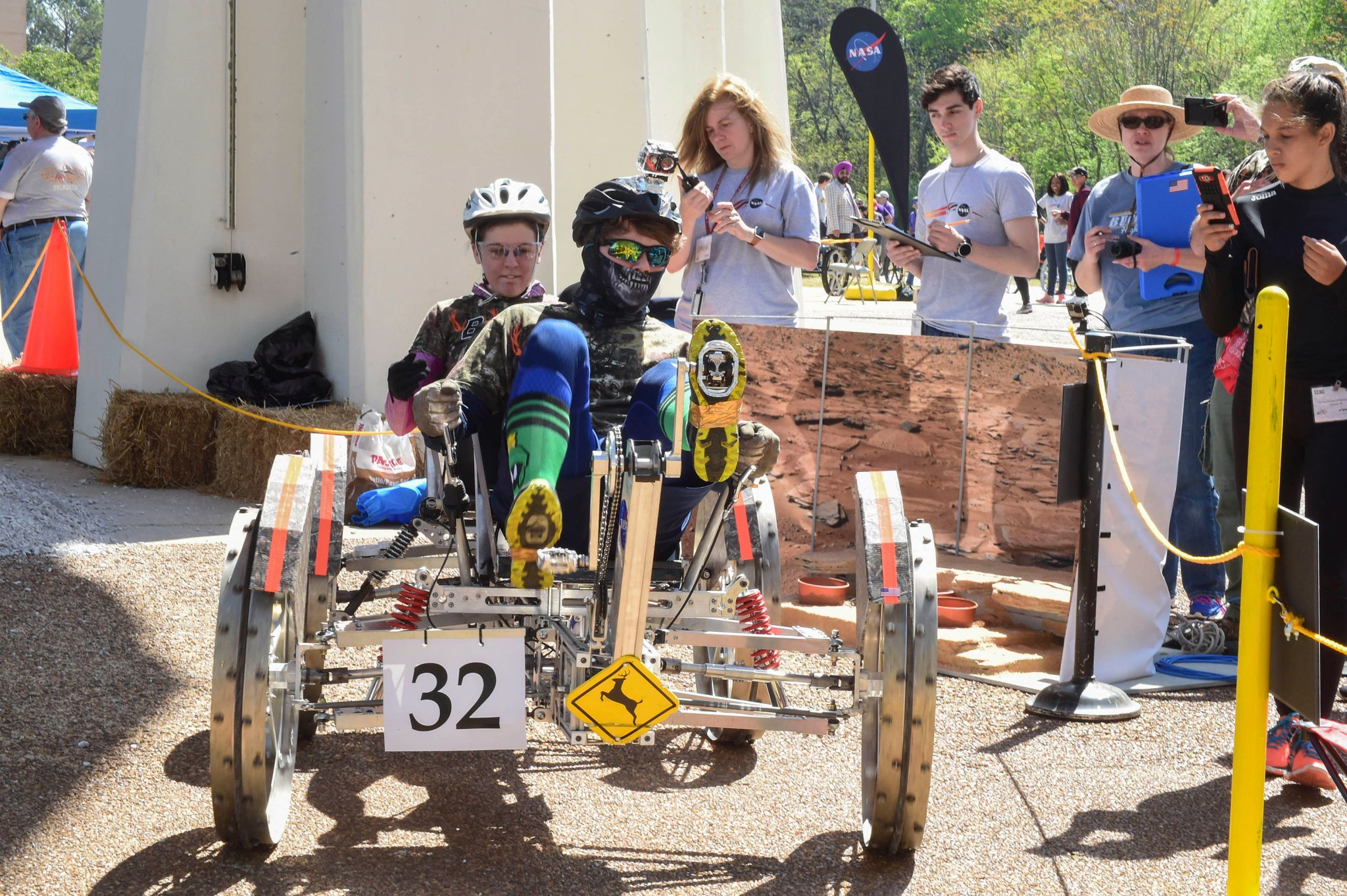As NASA celebrates the 50th anniversary of the first Apollo Moon landing this year, the agency is also gearing up for its 25th year of challenging young innovators to design, build and drive lightweight vehicles inspired by the original lunar rovers. On April 12-13, high school and college student teams from around the world will take part in NASA’s Human Exploration Rover Challenge at the U.S. Space & Rocket Center.

The competition, organized by NASA’s Marshall Space Flight Center in Huntsville and hosted on the grounds of the nearby U.S. Space & Rocket Center, honors a half-century of engineering ingenuity — from the groundbreaking Apollo lunar landings of the 1960s and 1970s to today’s preparations for bold new discovery missions to the Moon, Mars and beyond.
Nearly 100 teams are registered to participate, representing 24 states, the District of Columbia, Puerto Rico, and a record number of countries, including Bangladesh, Bolivia, Brazil, the Dominican Republic, Ethiopia, Egypt, Germany, India, Mexico, Morocco and Peru.
“Furthering STEM education — science, technology, engineering and mathematics — remains vital to NASA’s mission,” said Diedra Williams, who manages the project for Marshall’s Office of STEM Engagement. “We seek to attract the best and brightest minds to help us fly new missions to space, explore the solar system and extend our scientific knowledge of the cosmos itself. Initiatives such as Rover Challenge are crucial to our continued success.”
NASA redesigned the event in 2018 to better reflect modern planetary exploration challenges. New guidelines task students to design the lightest possible human-powered rovers. Each must be strategically powered by two student drivers — one male, one female — through a winding, half-mile course featuring 14 daunting obstacles and five technical tasks, such as collecting samples, taking photos and planting a flag.
There’s also a timer on each run, with just six minutes of “virtual” oxygen available. Teams must decide which tasks and hurdles to attempt or bypass before the clock expires. Over the two-day challenge, they will vie to be among the top three finishers, and to win awards from NASA and corporate sponsors including best vehicle design and best rookie team.
The Office of STEM Engagement at Marshall plans the event annually for the agency. Major corporate sponsors for the race are the Boeing Company; Jacobs Engineering; Polaris Industries; Lockheed Martin Corp.; and Northrop Grumman Corp., all with operations in Huntsville. Other contributors include the U.S. Space & Rocket Center, the City of Huntsville, Aerojet Rocketdyne, Science Applications International Corp., Davidson Technologies, the National Space Club, Teledyne Brown Engineering, Redstone Federal Credit Union, BWX Technologies, Leidos Inc., Integration Innovation Inc., Geocent LLC, MTS Inc., Aetos Systems, the University of Alabama in Huntsville, AI Signal Research Inc., the American Institute of Aeronautics and Astronautics-Greater Huntsville section, the Huntsville/Madison County Convention & Visitors Bureau, McDonald Scales Inc., Currie Systems, Kids In Space, MSB Analytics Inc. and Drury Inn & Suites, all of Huntsville; Cyient of Hyderabad, India; Corporate Office Properties Trust of Columbia, Maryland; the National Defense Industrial Association of Arlington, Virginia; and the Tennessee Valley chapter of the International System Safety Society.
The NASA Human Exploration Rover Challenge is sponsored by NASA’s Human Exploration and Operations Mission Directorate in Washington. It was launched in 1994 as the NASA Great Moonbuggy Race to commemorate the 25th anniversary of the Apollo 11 lunar landing. Just six college teams participated that first year. Expanded in 1996 to include high school teams, the race evolved again in 2014 into the Human Exploration Rover Challenge. Since its inception, more than 12,000 students have participated.

























